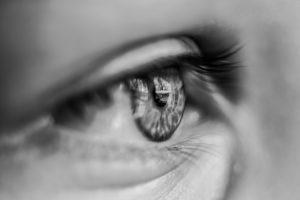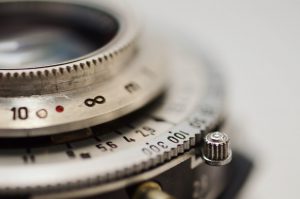Did you know that glaucoma is the second leading cause for blindness in the world? While everyone is at risk for developing glaucoma, people over the age of 60 have a higher risk. Statistics show that over 3 million Americans have it, but only half know they actually have it. There are no known cures for the disease yet. However, there are precautions you can take to prevent glaucoma.
What Is Glaucoma?

The optic nerve has over 1 million nerve fibers, connecting the retina to the brain. Glaucoma is a disease in which the optic nerve is damaged, causing vision loss, and blindness. There are 3 main types of glaucoma diseases, open-angle glaucoma, angle-closure glaucoma, and low-pressure glaucoma. Most cases develop slowly over time, but if it is detected early on, you can significantly slow down the loss of vision.
The Causes
As mentioned, when there is damage to the optic nerve, then glaucoma begins. Fluid constantly flows to nearby tissues, and whenever the liquid cannot drain, it adds pressure to the optic nerve, causing damage. Family history, and your ethnicity can increase your risk of glaucoma. If your parents or siblings have it, have diabetes, or if you are African American or Latino, then you have a greater chance of the disease. The three main types/causes of glaucoma are:
- Open-angle (Chronic) Glaucoma– This is the most common type of glaucoma. There are no early warning signs for this type of glaucoma, because it develops slowly and is not noticeable. Most people feel fine and like nothing is wrong, because it is so unnoticeable. By the time a person notices vision loss, the disease is in its advanced stages, making the vision loss untreatable. Open-angle refers to the angle in your eye where the iris meets the cornea. The drainage canals become clogged causing eye pressure.
- Angle-closure (Acute) Glaucoma– This type of glaucoma is less common, and occurs when there are blocked drainage canals. Because of the blockage, the angle between the iris and cornea is closed or narrowed. Symptoms and damage are usually noticeable when it occurs, and needs immediate attention.
- Low-Pressure (Normal-Tension) Glaucoma– This occurs when the optic nerve is damaged, possibly due to poor blood flow to the nerve. even though the eye pressure is not very high.
The Early Signs
There are many early signs of glaucoma. It is very important that if you notice or suspect glaucoma, or any of the following symptoms to see your doctor immediately. Symptoms include:
- Vision loss, especially around the peripheral (side) vision.
- Seeing halos around lights
- The inability to adjust to darkened rooms
- Foggy or blurred vision
- Pain or pressure in the eye
- Nausea or vomiting
- Tunnel vision (narrowing of vision)
- Frequently switching glasses
If you are able to catch glaucoma early, then you have a higher chance of treating it. This usually occurs with eye drops, pills, laser surgery, and/or traditional surgery. The earlier you can prevent vision less, the better, because once you lose vision, you can not reverse it.
Prevention
In order to prevent glaucoma, there are some simple steps to take recommended by medical experts. A healthy lifestyle is the best way to prevent vision loss, and this includes:

Regular eye exams- Early detection from frequent eye exams are one of the main ways to prevent vision loss and glaucoma. It is recommended that people age 55-64 go to the eye doctor every 1-2 years, and people 64 and older go every 6-12 months.
Exercise– Moderate exercise can lower your intraocular pressure, which is the pressure that causes optic nerve damage. Walking or jogging can help lower the pressure.
Prevent Eye Injuries– Always wear protective eyewear when you are in the sun. Make sure you are not straining to read or watch something. Wear eyewear when you are dealing with construction, or sports to prevent any injury.
Keep Insulin Levels Low- Diabetes creates a higher chance of developing glaucoma. This is because diabetes can increase blood pressure, which includes eye pressure as well. Avoid sugar and high-carb foods in order to keep your insulin levels low.
Eye-Healthy Foods– Some foods to consider eating for healthy vision are foods rich in vitamins A,C,D, E, zinc, and omega-3 fatty acids. A lot of these vitamins are found in leafy greens, vegetables, and fruits.
Once you have vision loss due to glaucoma, then the harder it is to go back to regular vision. More often, when vision loss happens, it becomes irreversible. So the main thing to do is to stay on top of your eye health. Visit the eye doctor regularly, eat healthy, exercise, and if you exhibit any symptoms, then seek immediate medical attention.